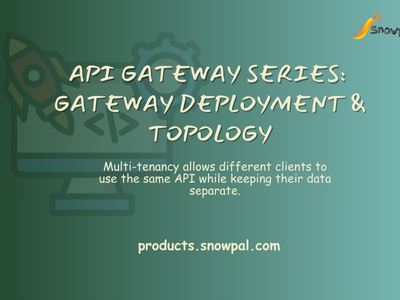API Gateway Series (3/12): Gateway Deployment & Topology
Snowpal API: Multi-tenancy allows different clients to use the same API while keeping their data separate. Future releases of the API will support more complex multi-tenancy features.
In this episode, Krish Palaniappan discusses the intricacies of API Gateway design, focusing on responsibilities, multi-tenancy, future microservices integration, avoiding vendor lock-in, and strategies for API monetization. He emphasizes the importance of flexibility and scalability in API architecture to meet diverse client needs.
Takeaways
The API gateway acts as a middleman between clients and backend servers.
Multi-tenancy allows different clients to use the same API while keeping their data separate.
Clients may have varying requirements for data separation and resource allocation.
Future releases of the API will support more complex multi-tenancy features.
The architecture should be designed to accommodate future needs without complete overhauls.
Avoiding vendor lock-in is essential for flexibility in API development.
Using multiple languages and frameworks can enhance system resilience.
API monetization is a key goal for businesses leveraging APIs.
The gateway will evolve to handle more complex microservices interactions.
Understanding client needs is crucial for effective API design.
Chapters
00:00 Introduction to API Gateway Series
01:02 Understanding API Gateway Responsibilities
02:51 Exploring Multi-Tenancy in APIs
05:13 Future of API Gateway and Microservices
07:35 Avoiding Vendor Lock-In and Flexibility
08:35 API Monetization Strategies
Video
Transcript
Podcast on Other Platforms
Snowpal Products
Backends as Services on AWS Marketplace
Mobile Apps on App Store and Play Store
Web App
Education Platform for Learners and Course Creators


